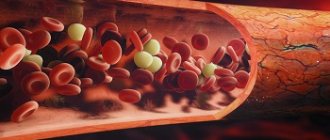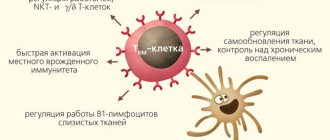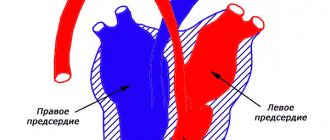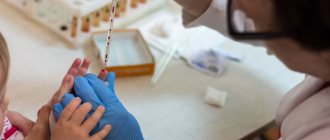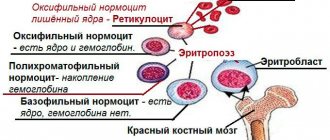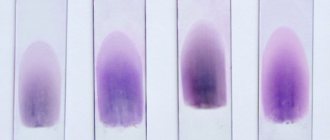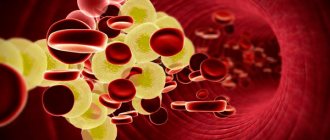Complexes with this research
Pregnancy planning.
Clinical indicators 6,800 ₽ Composition Entry into IVF Examination when a woman enters the IVF procedure 23,500 ₽ Composition
Examination during pregnancy. 1st trimester 17,040 ₽ Composition
IN OTHER COMPLEXES
- Examination during pregnancy. 3rd trimester 9,840 RUR
- Miscarriage RUB 40,440
- Female infertility RUB 16,470
- Coagulogram RUB 2,080
- Extended coagulogram RUB 4,230
Thick blood... Consequences.
Cuperosis is an unpleasant facial disease in which small blood vessels are visible. They become noticeable on the cheeks, nose, chin or forehead. At the beginning of the disease, small red stars appear, then they turn into a mesh.
Ascorutin for rosacea is indicated in combination with other drugs. Moreover, in this case, it can also be used externally, in the form of a tonic with chamomile, for example.
In order to make a tonic with chamomile, you need to brew chamomile (you can buy it at the pharmacy), add 2 Ascorutin tablets to this infusion, after grinding them into powder. You need to wipe your face with this tonic several times a day.
This medicine is indicated only for long and heavy menstruation. It is necessary to take Ascorutin a few days before the start of your period. The course of treatment should be about 10 days.
However, taking this drug without consulting a gynecologist is prohibited. Since such bleeding may be the result of a hormonal imbalance, in this case, taking Ascorutin alone will not give the desired result.
The drug contains two very useful substances for the human body: vitamin C in the form of ascorbic acid and rutin (another name is vitamin P). Knowing the properties of the components that make up Ascorutin, what these tablets are used for, it’s easy to guess. Vitamin C is an active antioxidant that has a positive effect on the body's defenses.
Ascorutin is prescribed to compensate for the deficiency of vitamins C and P. Taking this inexpensive drug strengthens the immune system and is a good prevention of influenza and colds. The purpose of Ascorutin is found in the treatment of diseases that cause increased fragility of large blood vessels and small capillaries. Next, read in more detail the instructions for using these tablets in the treatment of some common diseases.
The effectiveness of this medicine in the treatment of this disease will be greater if you take the tablets for preventive purposes. If the disease is already progressing, Ascorutin for varicose veins is not prescribed independently, but only as part of complex therapy. The drug helps strengthen the walls of blood vessels, relieve inflammation of the veins and eliminate swelling of the legs.
This drug can serve doubly well for long-term preservation of a beautiful and radiant appearance. Vitamin C, participating in the synthesis of collagen, will increase the elasticity of the skin, and the ability of the drug to improve the elasticity of blood vessels will help fight rosacea - the manifestation of spider veins on the face.
Hemorrhoidal disease is very common and is an enlargement of the hemorrhoidal veins.
During the inflammatory process of hemorrhoids, the hemorrhoidal veins enlarge and change shape, which form hemorrhoidal lumps around the rectum.
Most people experience unpleasant symptoms of hemorrhoidal disease from time to time, and for a minority, hemorrhoids occasionally worsen.
Take care of your health - save the link
There are the following types of hemorrhoidal disease, it depends on the course of the disease:
- Acute hemorrhoidal disease - manifests itself with severe pain in the rectal passage.
- Hemorrhoidal disease of the chronic type - the symptoms are not actively expressed, episodic bleeding, sometimes this type worsens, which can sometimes resemble the manifestation of the acute form.
Types of hemorrhoids depend on the location of the hemorrhoids:
- External (external) hemorrhoids are when the nodes are located on the outside of the rectal opening.
- Internal hemorrhoids are when the nodes are located inside the rectum and are almost invisible.
For adults, experts recommend taking the drug after meals; for prevention, take Ascorutin in the morning or evening for one month. It is not advisable to break the tablet, since the effect of ascorbic acid is destructive to tooth enamel. You need to drink as much cool water as possible, not mineral water or any other drinks. Mineral water has an alkaline environment, so ascorbic acid is neutralized in it. Hot water will destroy vitamins.
The compatibility or incompatibility of Ascorutin with other drugs is known, for example, that in combination with nicotinic acid these drugs enhance each other. But the combination of Ascorutin with alcoholic beverages is highly undesirable.
Ascorutin reduces the effect of sulfonamides and aminoglycosides; Heparin.
The combination of Ascorutin and salicylates may cause side effects.
Taking B vitamins together with Ascorutin enhances the therapeutic effect of the vitamins. If Ascorutin has been taken for more than one month, you can take some cardiac glycosides or non-steroidal anti-inflammatory drugs only after some time.
Since Ascorutin is a vitamin-like drug, like all vitamins, it is a fragile compound that requires proper storage. It must be stored in a cool place.
Important! If another drug is prescribed at the same time as taking Ascorutin, you need to inform your doctor about this, since Ascorutin affects the biochemical composition of the blood, in particular, bilirubin levels.
In the treatment of diseases such as capillary toxicosis, hemorrhagic vasculitis, the effect of Ascorutin is enhanced with the simultaneous administration of drugs prescribed for these diseases.
For varicose veins, Ascorutin is prescribed as a prophylaxis or as an adjuvant in complex treatment - due to its properties of thinning the blood, removing edema, inflammatory processes in the walls of blood vessels, and preventing the formation of blood clots.
Cuperosis is another disease of small capillaries of the face. Small red stars appear on the skin surface, turning into a network of blood vessels, and the face takes on an unsightly reddish tint. Ascorutin is prescribed in combination with other drugs, and not only internally, but also in the form of a facial tonic with the addition of chamomile. Chamomile is brewed as usual, and two ascorutin tablets ground into powder are added to the decoction.
If women experience heavy blood loss during prolonged menstruation, they lose a lot of blood; they may also be prescribed Ascorutin. Start taking it in advance of menstruation and drink it for the next 10 days. But if blood loss from menstruation occurs due to hormonal imbalance, then Ascorutin cannot be taken, so you should definitely consult a gynecologist.
For vegetative-vascular dystonia, the drug has a positive effect on the condition of blood vessels, strengthening them and thinning the blood. Usually, for this disease, treatment is prescribed for up to 4 weeks, after which a break is taken - an overdose should not be allowed.
There are also positive reviews of the use of Ascorutin in the treatment of hemorrhoids and red stars on the whites of the eyes. It is important to consider: Ascorutin thins the blood only after long-term use, but at the beginning of use, it, on the contrary, thickens it.
source
Ascorutin belongs to the group of vitamins. It has a positive effect on the microvasculature. Ascorutin both thins the blood and strengthens the walls of blood vessels. The drug contains vitamins C (ascorbic acid) and P (rutin). This is where its name comes from.
The drug with routine and vitamin C is used for the prevention and treatment of certain diseases. A thinning drug is simply not replaceable for those who have thin and brittle capillaries. This drug contains ascorbic acid, which is involved in metabolism and collagen formation. Vitamin C is also necessary to strengthen the bone tissue of tooth enamel. Ascorbic acid helps strengthen the immune system.
In addition to thinning the blood, swelling and inflammation of the walls of blood vessels are reduced. Both components included in the drug help form the intercellular substance and reduce the activity of the enzyme that destroys hyaluronic acid.
If you decide to go to the pharmacy and do not find the necessary medicine there, you can buy an analogue.
source
This drug is also prescribed for vegetative-vascular dystonia, weak veins, increased capillary fragility, and nosebleeds.
Nosebleeds usually occur due to increased capillary fragility, and Ascorutin copes with this problem perfectly. But even here it is better to consult a doctor, because there may be other causes of nosebleeds.
Ascorutin is used as a thinning and prophylactic agent for varicose veins, to prevent influenza and acute respiratory infections.
In addition, it is used in combination with other medications for the following diseases:
- hypovitaminosis C and P;
- complications after taking salicylic acid;
- with glomerulonephritis, inflammation of the membranes of the brain;
- infections affecting capillaries - measles, typhoid, influenza, rubella; vascular lesions after radiation exposure; damage to the ocular vessels.
Detailed description of the study
Thrombin is one of the key enzymes that influences the regulation of the blood coagulation system. It determines the stabilization of the blood clot, which is important for stopping bleeding. Changes in serum thrombin concentrations may reflect abnormalities in blood clotting (hemostasis). Thrombin is the main link in the last stage of coagulation (blood clot formation). The length of time required for a blood clot to form is called “thrombin time.”
Many components are involved in the formation of a blood clot, and the process itself takes place in several stages. At the final stage, fibrinogen dissolved in the blood plasma is converted into fibrin under the influence of thrombin, which stabilizes the blood clot.
This stage consists of three successive steps:
- First, thrombin cleaves parts (fibrinopeptides) A and B from fibrinogen;
- The remaining fibrin strands join together and form soluble complexes;
- Soluble complexes are converted into insoluble ones thanks to thrombin (it activates blood coagulation factor XIII and the enzyme plasma transglutaminase).
Insoluble fibrin is a more stable form that is practically indestructible.
The most common pathologies at the final stage of coagulation are various structural changes in the fibrinogen molecule, as well as changes in its functions. In the case of functional changes, they speak of dysfibrinogenemia (DFG).
Characteristic laboratory signs determined for dysfibrinogenemia:
- An extension of the final stage is observed, namely an extension of thrombin time, this is the main symptom characterizing such conditions;
- Increased platelet aggregation.
At the same time, the concentration of fibrinogen in the blood plasma remains within normal limits, and also does not change pathologically:
- APTT (activated partial thromboplastin time) is the period of time during which a blood clot forms);
- the amount of RFMC (soluble fibrinogen-monomer complexes, which are particles of blood clots);
- Concentration of D-dimers (fibrin breakdown products, which are determined in the blood after the breakdown of a blood clot).
Most often, dysfibrinogenemia develops against the background of acute and chronic liver diseases; hereditary pathologies are rare. Hereditary variants of disorders of the structure of fibrinogen and its functions: afibrinogenemia (complete absence of fibrinogen in plasma) and hypofibrinogenemia (the minimum amount of fibrinogen required for coagulation processes).
Clinical signs of decreased fibrinogen levels are increased bleeding or a tendency to thrombosis.
Patients usually complain of:
- Heavy bleeding that is difficult to stop;
- Poor wound healing;
- Menorrhagia (the amount of blood released during menstruation exceeds the norm);
- Spontaneous appearance of hematomas;
- Rash.
Most often, a person does not suspect the presence of hemostasis pathology for a long time, and dysfibrinogenemia is determined by chance among other laboratory tests or in preparation for surgery.
As a rule, a test to determine thrombin time is performed during anticoagulant therapy, as well as in women with pregnancy pathologies.
Fighting rosacea
Cuperosis is a very unpleasant disease. With this disease, small blood vessels are visible on the face. They can mainly be seen on the cheeks and nose, chin and forehead. At the very beginning, small red stars are formed, which subsequently turn into a mesh. Other agents can be used together with the drug.
Analogues include:
- Angiovitis;
- Venarus;
- Detralex;
- Anavenol;
- Aescusan;
- Troxevasin ointment.
References
- Clinical guidelines for the diagnosis and treatment of rare blood clotting disorders: hereditary deficiency of factors X, II, VII, 2021.
- Volkova, P.O., Zolotavina M.L., Didenko S.N. and others. Dependence of polymorphism of blood coagulation genes and blood group and rhesus affiliations in women. — Scientific almanac, 2021. — No. 1-2(15). — P.455-458.
- Sturov, V.G., Plyushkin, V.A., Anmut, S.Ya. and others. The final stage of blood coagulation: modern clinical and laboratory diagnosis of dysfibrinogenemia syndrome. - Thrombosis, hemostasis and rheology, 2008. - No. 2 (34). — P.8-15.
- Undas, A. Determination of fibrinogen and thrombin time (TT). — Methods in molecular biology, 2021.
Experts' answers to patient questions
Many patients often ask the question: does the drug with routine and vitamin C help with heavy periods? We answer their question like this: “Of course it helps. The only thing is, if heavy periods are the cause of hormonal imbalance, then you will additionally need to take hormonal medications.”- Patients suffering from varicose veins are interested in how much to take the drug for varicose veins? Firstly, it is worth saying that it is necessary to take Ascorutin for varicose veins together with other drugs. The course of treatment should last a month (at the doctor’s discretion, maybe more).
- For those who are encountering this drug for the first time, it must be said why it should be taken at all. This drug is prescribed to treat many diseases. This includes: vitamin deficiency, varicose veins, spider veins, venous insufficiency, influenza and acute respiratory infections.
- The next question is how to take the drug correctly? Ascorutin should be taken with a glass of water. It is better not to suck the tablets, as this can negatively affect the enamel of the teeth.
- For how long can I take the drug during menstruation? Experts recommend therapy for 10 days. Important! Before taking Ascorutin, consult a doctor.
- What age restrictions does this drug have? Ascorutin is allowed to be taken from 3 years of age.
- Now let’s answer the most important question: does the drug thicken the blood? Doctors answer unequivocally - yes. But in some cases, long-term use leads to the opposite results. Since the drug thickens the blood, it should not be taken to thin the blood.
- Hypertensive patients are concerned about the question: can taking Ascorutin increase blood pressure? Yes, but only if an overdose has occurred or as a possible side effect.
Follow the above rules and be sure to read the instructions for use before use, then taking the drug will be extremely beneficial.
Main indications for taking Ascorutin
The drug is prescribed to prevent the development and treatment of pathologies accompanied by insufficient blood circulation, blood disorders or vitamin deficiency. Among them:
- tendency to increased platelet formation;
- vascular damage by salicylates;
- hemorrhagic diathesis;
- hemorrhage in the retina;
- violation of intraocular pressure;
- atherosclerotic changes;
- rheumatism;
- Iron-deficiency anemia;
- some forms of hypertension;
- venous insufficiency;
- varicose veins: lower extremities, rectum;
- trophic ulcerative lesions;
- thrombophlebitis;
- consequences of severe scarlet fever, measles;
- frequent nosebleeds;
- changes in blood composition as a result of radiation exposure.
In most cases, Ascorutin is indicated in combination with other medications or vitamin-mineral medications.
As an adjuvant, Ascorutin is used in vitamin therapy for menstrual disorders: for heavy or irregular discharge. Its regular use helps to normalize pancreatic function and the absorption of glucose by cells. This helps stabilize the condition of diabetic patients at an early stage.
For diseases of the joints and spine, the product improves metabolic processes in the tissues of cartilage and skeleton, prevents the leaching of calcium, supports the formation of intra-articular lubrication, and slows down inflammatory reactions.
How does Ascorutin work?
The vitamins contained in the drug quickly dissolve in the stomach and are absorbed through the mucous membrane into the blood. In the complex, ascorbic acid and rutoside complement and enhance each other’s effectiveness. Both compounds are active antioxidants. They help reduce intoxication of the body during inflammatory and infectious processes, increase resistance, regulate blood clotting and fluidity, preventing red blood cells from sticking together.
In the complex therapy of vascular diseases, Ascorutin helps restore peripheral blood supply, restore the integrity of capillaries, prevent and eliminate edema, trophic ulcers, improve the supply of nutrients to tissues and the removal of toxins.
